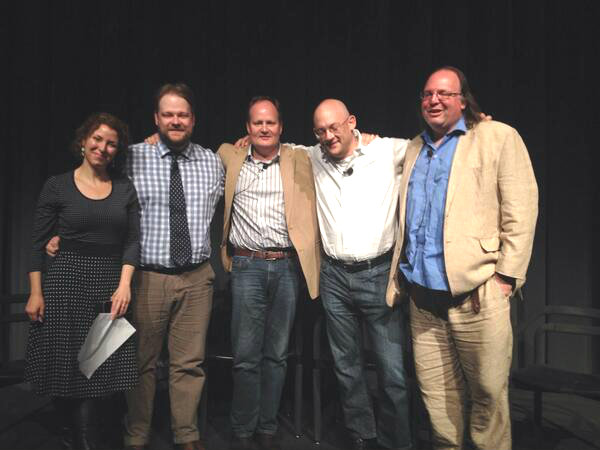 The stakes in the raging battle over ad-blocking software are high — but they’re not quite what you might think.
The stakes in the raging battle over ad-blocking software are high — but they’re not quite what you might think.
On the surface, it all seems straightforward enough. In one corner are executives at struggling news organizations who want to be sure that visitors to their websites actually see the ads. Thus did the Washington Post recently experiment with blocking the ad-blockers, a development first reported by BuzzFeed.
“Many people already receive our journalism for free online, with digital advertising paying only a portion of the cost,” a Post spokesperson was quoted as saying. “Without income via subscriptions or advertising, we are unable to deliver the journalism that people coming to our site expect from us.”
In the other corner are users who are sick and tired of popups, pop-unders, scroll-across-the-screeners and other obstrusive ads that invade your privacy by tracking your interests and that, in some cases, carry spyware or malware.
“What is unlikely to fly as a long-term strategy is begging readers to load all of the 50 or so trackers and ad-loaders and popups and banners, each of which might make a publisher three cents per thousand clicks, if they are lucky,” writes Mathew Ingram at Fortune. “That business is in a death spiral, and yelling about ad blockers isn’t going to change that.”
In fact, the ad-blocking controversy is anything but a simple morality play. Nor is it a coincidence that the issue has reached a frenzied peak thanks to Apple’s decision to include ad-blocking in its iOS 9 software for iPhones and iPads. Because the real stakes are being fought not on the Internet but in the boardrooms of the giant tech companies that want to control your online experience.
Nilay Patel, editor-in-chief of The Verge, explained it last week. Essentially, it comes down to this: publishers that rely on web advertising are helping to drive revenue to Apple’s archenemy, Google, which controls much of the infrastructure for online ads. Block those ads and those publishers are more likely to run into the warm embrace of Apple, whose new Apple News platform provides a nice, safe, closed environment with ads that can’t be blocked. And Apple gets a 30 percent cut.
Facebook offers a similar service, the still-aborning Instant Articles, which allows publishers to post their content directly inside Facebook’s all-powerful newsfeed. As with Apple News, Facebook takes a cut of the action from the unblockable ads that will be displayed. It’s such an attractive proposition that the same Washington Post that’s trying to block the ad-blockers announced Tuesday that it will also publish 100 percent of its content to Facebook. Patel writes:
So it’s Apple vs. Google vs. Facebook, all with their own revenue platforms. Google has the web, Facebook has its app, and Apple has the iPhone. This is the newest and biggest war in tech going today.
And the collateral damage of that war — of Apple going after Google’s revenue platform — is going to include the web, and in particular any small publisher on the web that can’t invest in proprietary platform distribution, native advertising, and the type of media wining-and-dining it takes to secure favorable distribution deals on proprietary platforms. It is going to be a bloodbath of independent media.
As a matter of principle, I refuse to use ad-blocking software — but I turned on AdBlock while researching this article just to see what would happen. As anyone could have told me, sites loaded more quickly and with fewer distractions. ESPN.com, which is so bogged down with ad-related bloatware that it’s become virtually unreadable, was zippier than I’ve ever seen it. A small hyperlocal site that I often visit suddenly appeared ad-free, simply because the site relies on an external ad-server business that AdBlock intercepted.
Interestingly enough, Marco Arment, the creator of the best-selling ad-blocking program Peace, pulled the software from Apple’s App Store almost as soon as it was released last week. “Achieving this much success with Peace just doesn’t feel good, which I didn’t anticipate, but probably should have,” he wrote on his blog. “Ad blockers come with an important asterisk: while they do benefit a ton of people in major ways, they also hurt some, including many who don’t deserve the hit.”
By acting as he did, Arment may have pointed the way to a possible solution. Because the problems ad-blockers are designed to solve are real, and they run a lot deeper than mere inconvenience. As Dan Gillmor recently wrote in Slate, “The advertising and tracking industries, abetted by telecommunications carriers, are investing in all kinds of technologies aimed at thwarting users’ wishes to retain some control over their online activities.”
So why not come up with a different kind of blocker — a piece of software that informs you when you’re about to access a website that fails to follow some agreed-upon list of best practices regarding privacy and user experience?
Such an arrangement may be the best way to preserve independent media on the open web. Users would be able to protect themselves from abusive adware without freeloading. And web publishers who see their traffic drop might decide it’s time to change their ways.
Previously published at WGBHNews.org and in The Huffington Post.







